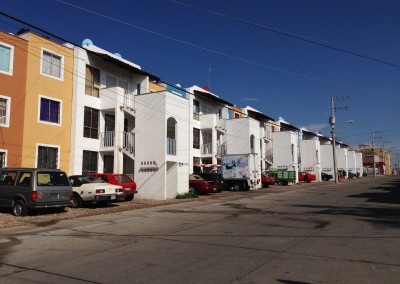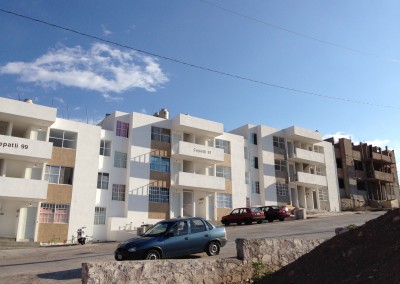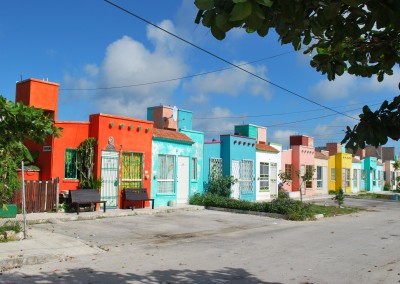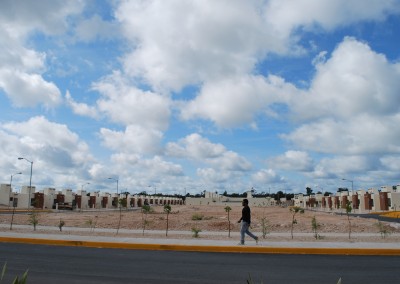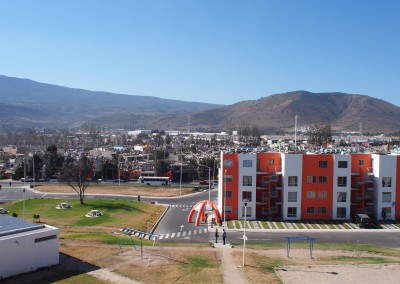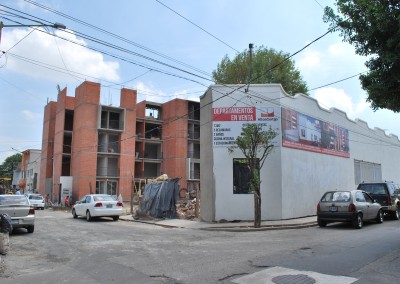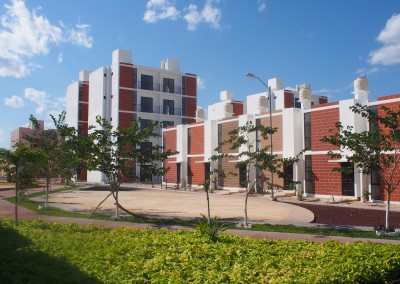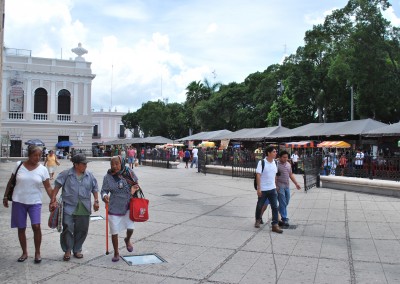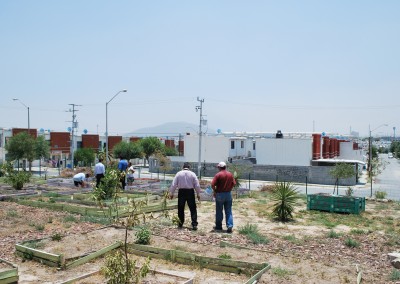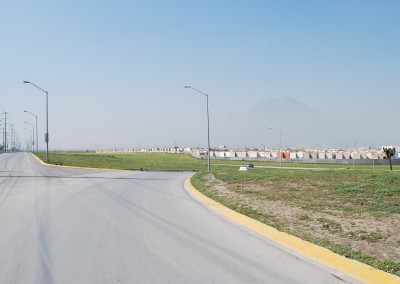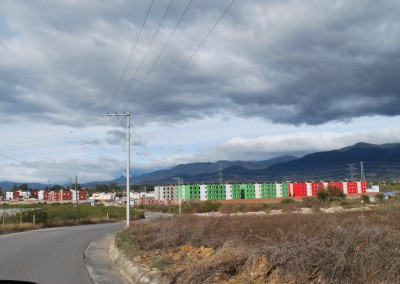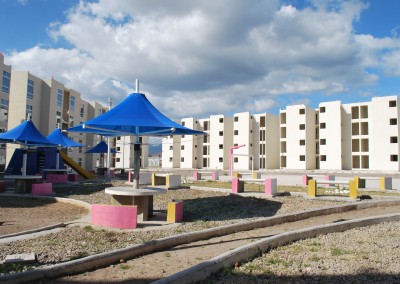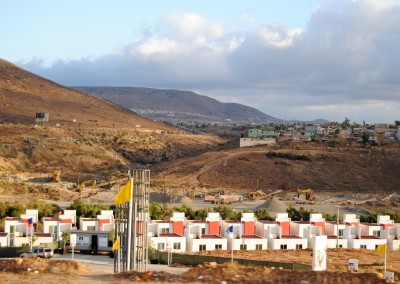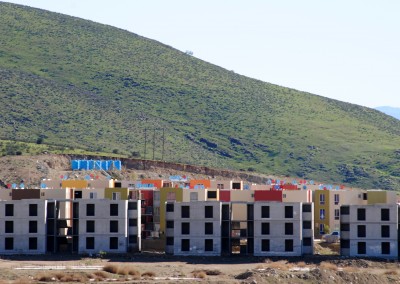Research Case Studies
Building Better Cities with Strategic Investment in Social HousingThe governance research team developed a set of policy recommendations based on research in seven metropolitan areas across Mexico: Aguascalientes, Aguascalientes; Cancún, Quintana Roo; Guadalajara, Jalisco; Mérida, Yucatán; Monterrey, Nuevo León; Oaxaca, Oaxaca; and Tijuana, Baja California. Fieldwork research revealed an incredible range of housing dynamics across different cities and a unique set of challenges facing densification and social housing development.
For the final governance report with policy recommendations, click here.
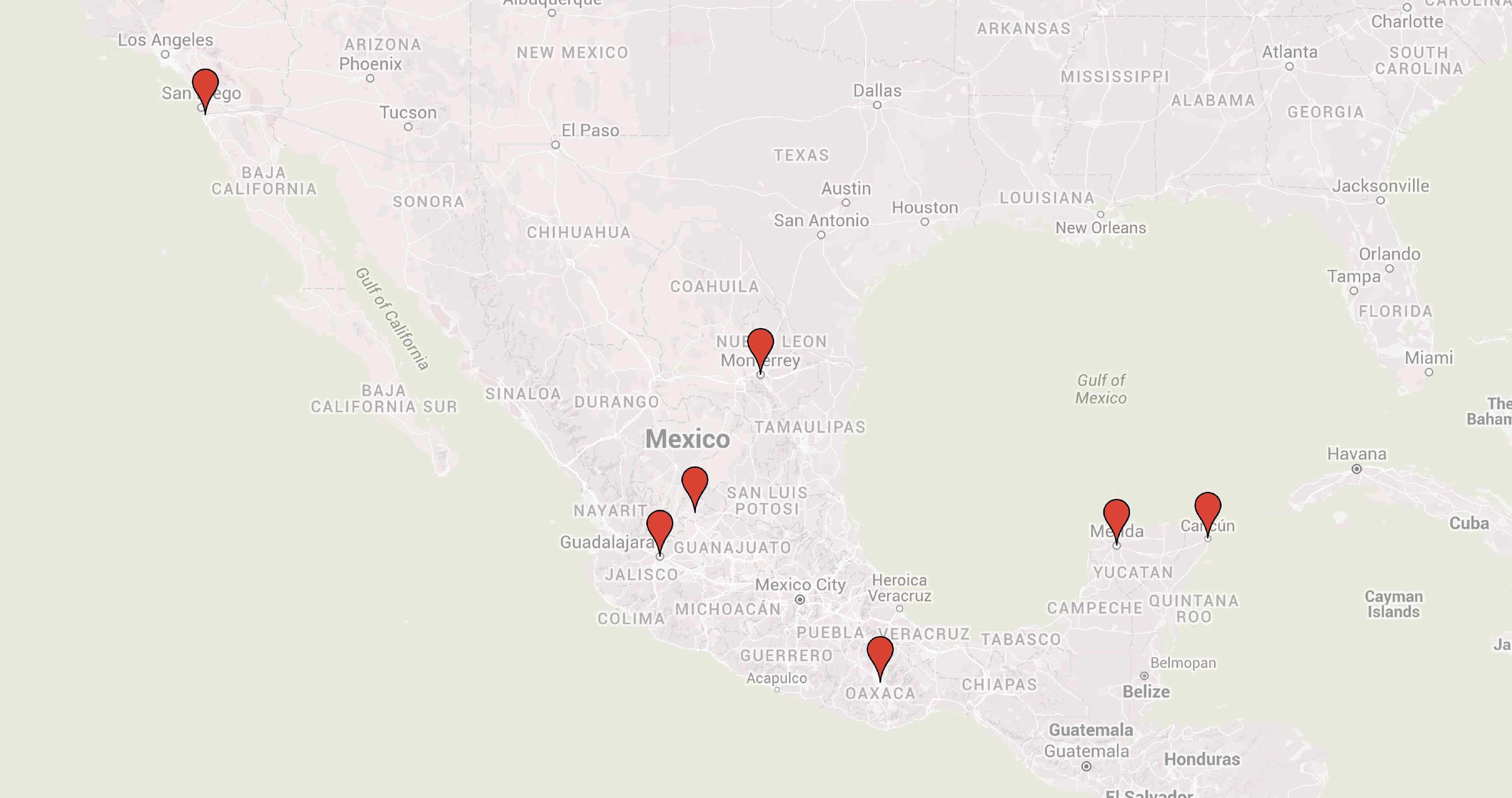
Aguascalientes
Aguascalientes is a relatively small metropolitan area with only three municipalities, consisting of Aguascalientes, Jesus Maria, and San Francisco de los Romo. Nonetheless, the area is home to a population of 930,000, and exerts a great deal of authority in a relatively small state, with only eleven total municipalities, thus strengthening its legacy as a “city-state.” As a state capital, Aguascalientes is characterized by high levels of coordination between state and municipal leadership, particularly around issues affecting urban development, planning, and housing. Fieldwork research addresses the particular role of state government efforts, the challenges of adapting densification policies to the local context, and the intersectoral coordination that has advanced new, sustainably built, large-scale housing developments.
Cancún
Home to the two municipalities of Isla Mujeres and Benito Juarez, the metropolitan area of Cancun has the unusual origin story of being planned and constructed by the federal government, beginning in the 1970s. With a population of approximately 680,000 residents, the metropolitan area is characterized by a working population that is closely tied to the predominant industry, with nearly 80% of working population employed in tourism. Fieldwork research focuses on the metropolitan area’s experience with peripheral housing developments that lack necessary urban services, the recent attempts of developers to integrate higher density housing and adapt to the coastal climate, and the challenges of high land costs in a region dominated by tourism.
Guadalajara
Guadalajara is a major metropolitan region in Mexico, home to nearly 4.5 million residents and comprised of eight municipalities: Guadalajara, Zapopan, San Pedro Tlaquepaque, Tonalá, Tlajomulco de Zúñiga, El Salto, and Ixtlahuacan. Although an economic anchor and major job center, Guadalajara is currently struggling to address the costly impacts of urban sprawl and housing abandonment. Fieldwork research addresses Guadalajara’s struggle toward metropolitan coordination (through a recently inaugurated Institute for Metropolitan Planning) and more coordinated and dense urban growth.
Mérida
Metropolitan Merida, a mid-sized city located in the Yucatan peninsula, is the main social, cultural, and economic center in the region known as the Sureste Mexicano. The metropolitan area is home to nearly 1 million residents (973,000) and is comprised of a total of five municipalities: Conkal, Kanasin, Merida, Ucu, and Uman. Metropolitan Merida’s population is largely concentrated in the municipality of Merida, but new growth in peripheral municipalities, often built without proper infrastructure and lacking in sustainable water delivery and waste removal, remains an enormous challenge for small municipalities with minimal public resources. Fieldwork research focuses on the enabling factor of Merida’s flat topography, cultural resistance to densification and verticality, as well as the predominance of a low-income earning population requiring high levels of subsidy to achieve homeownership.
Monterrey
Monterrey is an economic powerhouse in northeastern Mexico with a long history of industrial production, linked closely to its urban growth. The metropolitan area is home to approximately 4.1 residents and is comprised of 13 total municipalities: Apodaca, Cadereyta Jiménez, Carmen, Garcia, General Escobedo, Guadalupe, Juárez, Monterrey, Salinas Victoria, San Nicolás de los Garza, San Pedro Garza Garcia, Santa Catarina, and Santiago. Fieldwork research in Monterrey addresses the area’s tendency to rapid and sprawling “ultra growth” in peripheral municipalities, the highly mobilized private sector actors, and the role of key anchor institutions (such as universities) in promoting major urban projects.
Oaxaca
The metropolitan area of Oaxaca consists of 22 municipalities, the largest number of all the case studies profiled in this research. Home to approximately 550,000 residents, the metropolitan area is unsurprisingly characterized by significant fragmentation, whether in terms of political coordination or delivery of urban services and infrastructure. Given high levels of informality, the state of Oaxaca has relatively low production of INFONAVIT housing, particularly as compared with other major producers such as Nuevo Leon or Jalisco. Fieldwork research highlights recent government efforts to coordinate urban growth, challenges associated with the predominance of ejidal and communal land, and the challenges posed by a tightly controlled historic center.
Tijuana
As the northernmost of the case study sites, Tijuana encompasses the three municipalities of: Tijuana, Playas de Rosarito, and Tecate. The metropolitan area is home to 1.75 million people, with high levels of informality and housing abandonment, due in part to the city’s location on the U.S. border. Fieldwork research focuses on the city’s informality in housing tenure as well as urban services, relatively openness to higher density development, and active nonprofit sector.
